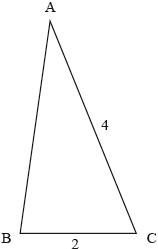| Date | November Example questions | Marks available | 4 | Reference code | EXN.1.AHL.TZ0.12 |
| Level | Additional Higher Level | Paper | Paper 1 (without calculator) | Time zone | Time zone 0 |
| Command term | Hence and Find | Question number | 12 | Adapted from | N/A |
Question
Use the binomial theorem to expand . Give your answer in the form where and are expressed in terms of and .
Use de Moivre’s theorem and the result from part (a) to show that .
Use the identity from part (b) to show that the quadratic equation has roots and .
Hence find the exact value of .
Deduce a quadratic equation with integer coefficients, having roots and .
Markscheme
* This sample question was produced by experienced DP mathematics senior examiners to aid teachers in preparing for external assessment in the new MAA course. There may be minor differences in formatting compared to formal exam papers.
uses the binomial theorem on M1
A1
A1
[3 marks]
(using de Moivre’s theorem with gives) (A1)
equates both the real and imaginary parts of and M1
and
recognizes that (A1)
substitutes for and into M1
divides the numerator and denominator by to obtain
A1
AG
[5 marks]
setting and putting in the numerator of gives M1
attempts to solve for M1
(A1)
A1
Note: Do not award the final A1 if solutions other than are listed.
finding the roots of corresponds to finding the roots of where R1
so the equation as roots and AG
[5 marks]
attempts to solve for M1
A1
since has the smaller value of the two roots R1
Note: Award R1 for an alternative convincing valid reason.
so A1
[4 marks]
let
uses where (M1)
M1
A1
[3 marks]


